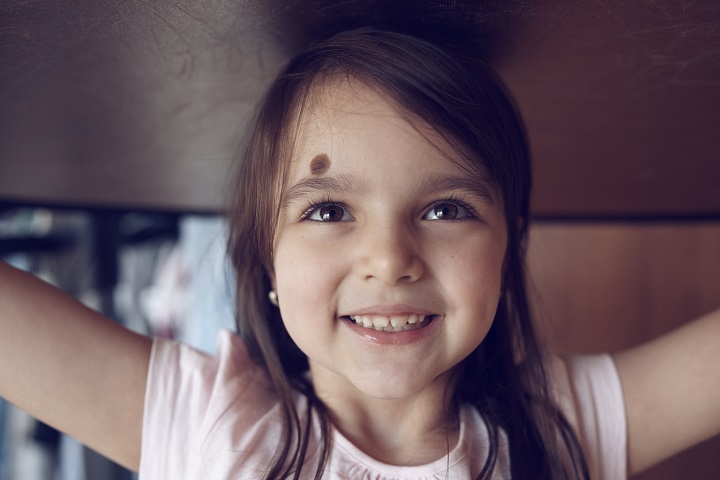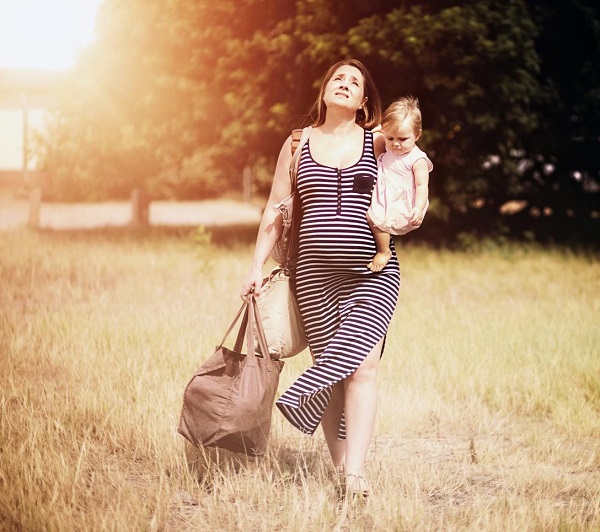Fear is something parents want to protect their children from as much as possible, but anxieties can easily be passed on from parent to child, writes RACHEL MURRAY.
Recently, I got chatting to a lady in a dentist waiting room. She was there to meet her eldest daughter who, she explained, was terribly afraid of the dentist and could not go into the dental surgery alone. The mother admitted she herself was also afraid of the dentist but was able to go alone.
Fear is caused by either a bad experience or it is learned. Children, especially babies and toddlers, learn by example and look to their parents or caregivers to make sure what they are doing is safe. Allison Keating, a psychologist at the bWell Clinic, Dublin, says, “If a child is in a situation where they see a parent on a regular basis being afraid of something, then the likelihood of that child developing a fear of the situation, object or animal is quite common.” Just about everyone has something they fear. It could be a minor fear; for example, you might not like being around a particular animal, though it wouldn’t stop you from doing anything. That said, you also wouldn’t purposely put yourself in a situation where you were confronted by your fear.
Reacting to fear
Fear is an unpleasant feeling and can cause the body to become flushed, sweaty or frozen; people feel a sudden adrenaline rush, the heart beats faster, and some react by running away. How a parent acts or reacts to fear can have a serious impact on their children.
Allison explains: “If a parent sees something they are frightened of, they might squeeze the child’s hand just a little bit tighter.” A child can sense a parent’s anxieties and, therefore, will associate that object, situation or animal with danger. Allison says that becoming a parent can sometimes worsen fears. For example, a woman might have quite a strong fear of flying, and being confronted by that fear with her children can compound it. “I see this quite commonly with young mothers,” says Allison. “They feel even more out of control in certain situations, like on a plane where they can’t actually get off.”
Becoming a parent makes you more aware of your fears. Taking on the role of a protector can cause you to either become more fearful or want to face your fear so your children won’t experience the same feelings.
Allison has this advice for parents: “Be aware of your reaction to the fear in front of your children and be mindful of their response. Make a conscious decision to try and change. Recognise the fear and what the fear represents to you.”
Allison reminds fearful parents to think of the worst-case scenario, whatever the fear may be. Think: what is the worst thing that can happen with that spider? “Don’t minimise your fear; be fully aware it is a fear to you. And by acknowledging that it is actually a fear to you, you can minimise the fear in a respectful way,” she says.
Phobias
Everyday fears should not be confused with phobias. A phobia is defined as a persistent irrational fear of a specific object, activity or situation, which leads to a compelling desire to avoid it. It is a hugely strong and, often, unconscious response for the person.
The Diagnostic and Statistical Manual of Mental Disorders describes a phobia as a fear triggered by exposure to a specific stimulus, which does not represent a real danger, and the response to the perceived threat being out of proportion to what would be reasonable. Sharon Grainger, consultant psychologist at Connolly Counselling Centre, says these strong, persistent and unwarranted fears are the most common psychiatric disorder. “A phobia is a fear directed toward an object (like spiders or dogs) or situation (such as a dentist visit) that does not present a real danger. While the sufferer
recognises that the fear is unreasonable, they feel they cannot help the reaction,” she explains.
Phobias are caused by a combination of biological, psychological, and social influences. “These fears appear to be hardwired into us,” says Sharon, who describes how avoiding a phobia can impact on sufferers’ daily lives.
Passing it on
While panic disorder is rarely present during childhood, according to Sharon, children of parents with panic disorder are eight times more likely to develop it themselves when they enter adulthood. “Children can develop learned phobias. Parents who display phobias, chronic fear or nervous behaviour usually have similarly anxious children,” she says. “Overly cautious parents may unwittingly send messages to their children that the world is a scary place. These learned opinions can also hinder children from taking chances throughout life, leading to a lack of confidence and self-assuredness, in addition to stifling the opportunities that the world has to offer them,” she adds.
Sharon’s advice for nervous parents is to try not to display excessive amounts of anxiety in front of their children and instead demonstrate how to remain in control even when feeling afraid, or even teach them relaxation techniques and coping skills.
According to Allison, a lot of people don’t actually treat their phobias because they are so terrified of them – but when they become parents, they suddenly become aware of how they can pass on their phobia. “This is often the point when they seek help,” she says. “Parents may have had the phobia for their entire life but having children triggers a want to overcome their phobia so their children won’t exhibit the same feelings.” Those who suffer from phobias react in an irrational way but, as Allison says, “The person isn’t doing it out of any badness; they literally don’t feel able to control their response.”
Understanding your phobia is the first step to overcoming it. It’s important to know that phobias are common and having one doesn’t mean you’re crazy. Phobias are highly treatable and can be overcome no matter how out of control it feels.
How to deal with a strong fear of :
Monsters, ghosts or darkness: Reduce exposure to frightening stories in books and on TV until your child understands the difference between reality and imagination. Do a thorough ‘search’ of your child’s room for monsters, showing there are none there. Leave a lamp or hall light on and tuck her in with her favourite toy for protection.
Animals: Do not force your child to approach the feared animal. Let the child move at her own pace. Show her how to hold and pet the animal – this lets her know that, when the animal is treated gently, it is perfectly safe and friendly. If your child is bigger than the animal, emphasise this by saying: ‘You’re so big. That dog is probably afraid of you.’
Intense fears: If a child’s fear is intense, persists or is interfering with daily activities, it could mean it has reached the level of a phobia. Sometimes phobias are linked to family problems and counselling is needed to reduce them. At other times, phobias disappear without treatment as the child becomes more able to deal with her emotions.
If you would like to seek treatment for a phobia, psychologist Allison Keating is available at bWell Clinic (www.bwell.ie), and consultant psychologist Sharon Grainger can be contacted at Connolly Counselling Centre (www.counsellor.ie).
Originally posted 2015-10-12 10:30:30.









